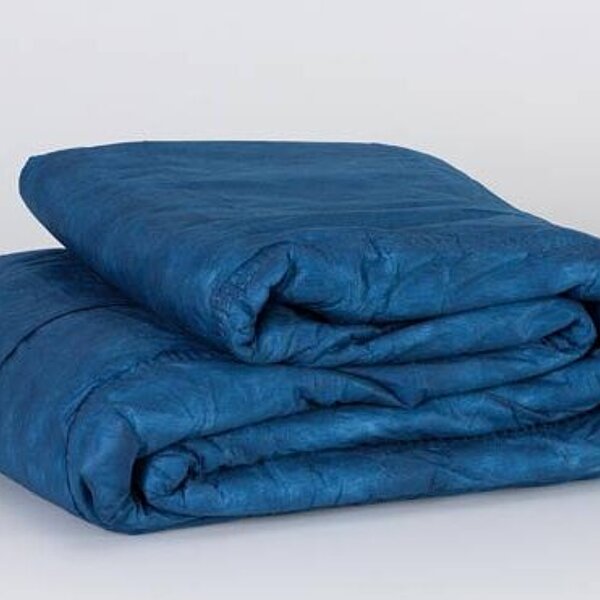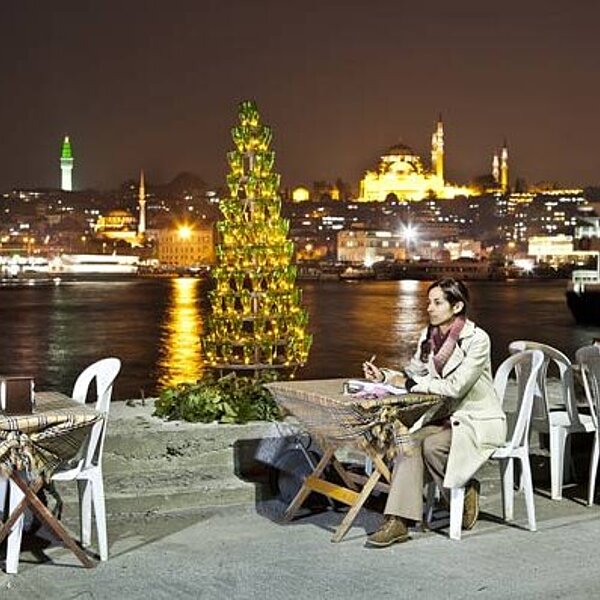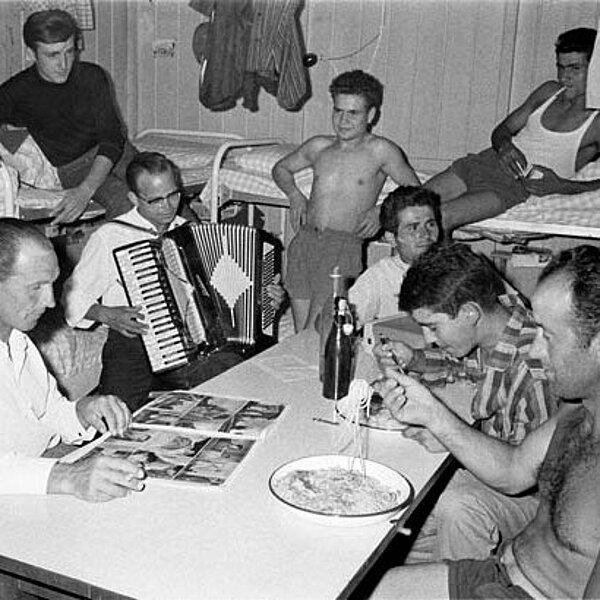Migration is normal in a growing city and as much a part of Munich as is Marienplatz. Brickmakers from Italy’s Friuli region, who produced the construction materials for many typical Munich buildings, “displaced persons” who helped just as much with re-building the city after World War II as other groups, and “guest workers”, who made key contributions to industrial production and urban development have all left their marks on Munich’s culture and daily life. These people, their stories, and their memories are part of Munich's DNA and „Typically Munich!“.
This can clearly be seen in areas like the Westend, originally a working-class district and now a trendy neighborhood with one of Munich’s highest percentages of foreigners, and in the city’s lively religious diversity.
Munich is and has always been a city of immigrants. This is the perspective taken, since 2015, by the Münchner Stadtmuseum and the Stadtarchiv München (Munich City Archives) in researching the city past and present, concentrating on the period starting at the end of World War II. Their “Migration Moves the City” project successfully adopted new approaches to our history and forged close contacts with leading players in the field of migration. It also contributed innumerable new sources and significant objects to the collections of both institutions. Staff contracts were made permanent at the start of 2020, and now migration research is a function central to the work of both the Stadtarchiv München and the Münchner Stadtmuseum.
Since September 2018, these endeavors have made a major contribution to the Münchner Stadtmuseum. New additions to the “Typically Munich!” permanent exhibition have allowed us to fill gaps in the city's history and offer further evidence of the ways in which migration has left its mark on Munich and, indeed, how it continues to do so. The chronology of the permanent exhibition has been breached and now faces a questioning commentary on how it has been presented up until now. What changes must we make to our perspective to truly tell the story of an immigration society?
Which objects best serve our purpose? How can the history of migration become a shared narrative of this city?
A total of 15 exhibition stations feature objects that represent the past and the present of migration in Munich and invite visitors to adopt a new perspective. In addition, each of these stops has a tablet so that visitors can interact with additional objects and digital content related to that particular station. The exhibition texts and the additional interactive material have been translated into English and Modern Standard Arabic with a view to reaching the widest possible audience. Visitors can also use two participative modules to help put together their own collections on Munich's history of migration and join the debate on how the city should now start to view itself.
Further, Munich scenographer Juliette Israel’s design of this exhibition uses the additional exhibits and modules to underline the new direction that Münchner Stadtmuseum has now taken. Its installations clearly show that the process that the “Migration Moves the City” project first set in motion almost four years ago is far from complete. Further installations may indeed still be added, and locations and cross-references within the permanent exhibition remain flexible.
Finally, the exhibition also shines a spotlight on the perspectives of new immigrants to the city. In what different ways do new residents in Munich experience their arrival and settling-in period? Which locations are important to them, and what are their expectations or demands of the city? The actual perspective of the players in the migration narrative themselves plays a central role in the accompanying program. Residents with an immigrant background will jointly lead tours of the exhibition with curators and will talk about their own personal experiences and points of view. In 2019, these very people led tours in their own native languages, with the program being presented in seven languages for the first time, namely Arabic, Bosnian, Croatian, German, Greek, Italian, and Turkish.
The exhibition is accompanied by a book of 252 pages, with more than 200 illustrations; it is the first volume published by Ursula Eymold and Andreas Heusler in the Allitera house "Münchner Beiträge zur Migrationsforschung” series. In addition to extensive documentation of the exhibition, the publication provides remarkable insights into the working methods and results of the four-year project entitled “Migration Moves the City.” Articles by the academic and technical advisors who have been a part of the project since its inception illustrate how it is anchored both in research and in civil society. The articles are authored by: Ursula Eymold, Isabella Fehle, Simon Goeke, Andreas Heusler, Hannah Maischein, Vivienne Marquart, Johannes Moser, Karolina Novinscak-Kölker, Grazia Prontera and Philip Zölls.
Project management: Ursula Eymold and Dr. Andreas Heusler
Plan Your Visit
Opening hours
Although the Münchner Stadtmuseum's exhibitions closed on January 8, 2024, for a complete renovation, the cinema and the Stadtcafé will remain open to visitors until June 2027.
Information to Von Parish Costume Library in Nymphenburg
Filmmuseum München – Screenings
Tuesday / Wednesday 6.30 pm and 9 pm
Thursday 7 pm
Friday / Saturday 6 pm and 9 pm
Sunday 6 pm
Contact
St.-Jakobs-Platz 1
80331 München
Phone +49-(0)89-233-22370
Fax +49-(0)89-233-25033
E-Mail stadtmuseum(at)muenchen.de
E-Mail filmmuseum(at)muenchen.de
Ticket reservation Phone +49-(0)89-233-24150




